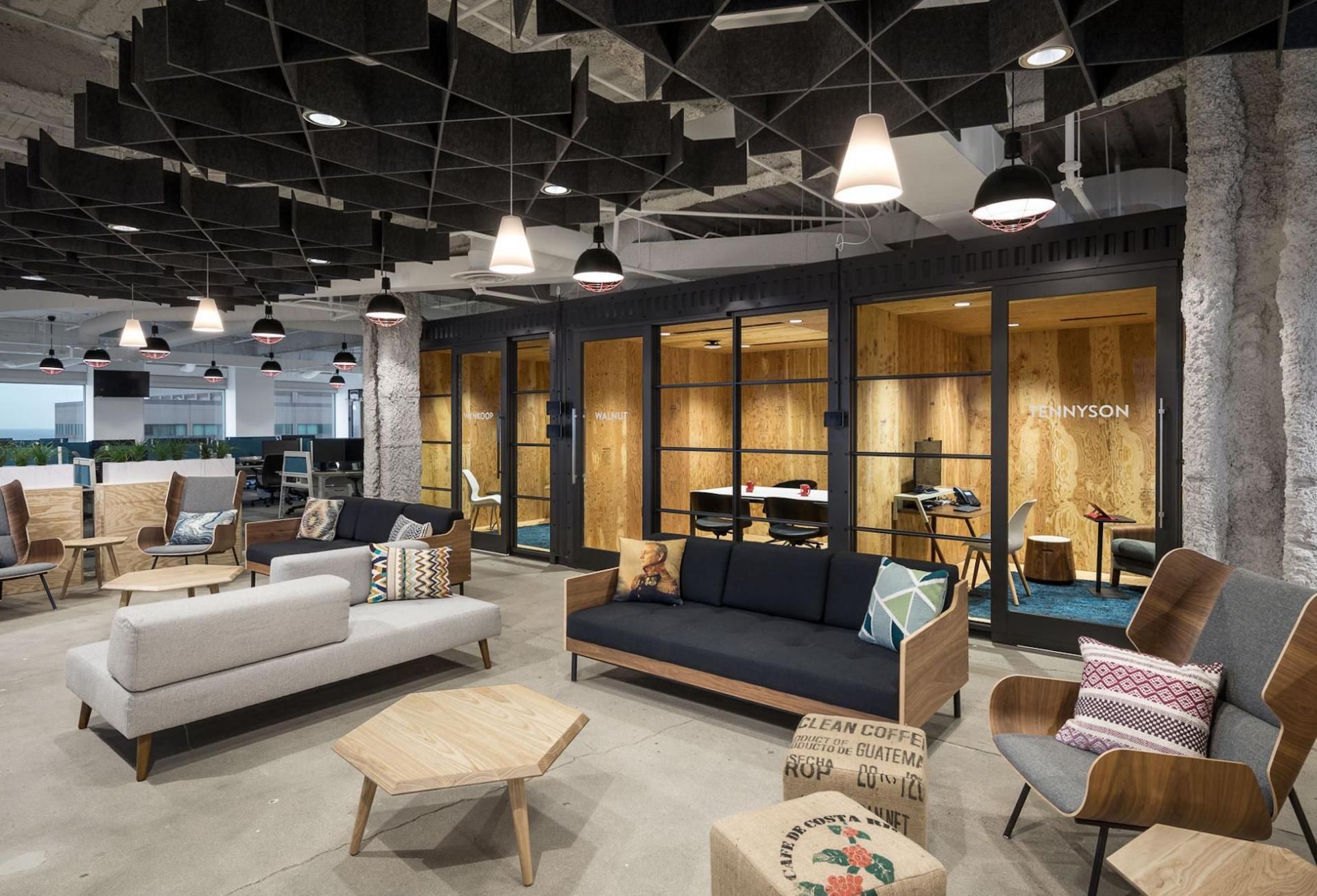March 25, 2019
April 1, 2019
A Company's Culture Is Key To Office Design

The tech industry is known for its progressive workplace design that helps attract and retain employees in today’s competitive job market. The amenity-rich, open-concept office designs tech companies seem to favor are believed to foster innovation, creativity, productivity and collaboration — qualities any company, technology or otherwise, would want to encourage in their employees.
But it is important to understand a company’s culture and how its employees work together before jumping into the design of its office space. That understanding is key to creating workspace that promotes innovation and productivity, and that is where firms like Venture Architecture come in.
The Denver-based company specializes in discovery-focused design and delivery, and its portfolio includes projects from new corporate headquarters and tenant improvement office spaces to mixed and adaptive reuse, multifamily and education.
Bisnow sat down with Venture Architecture Principal Architect Martin Goldstein to get his take on how to effectively design office space that will keep employees engaged and eager to show up for work each day.
Bisnow: How do you think about designing an office that a tech firm may be as likely to occupy as a more traditional tenant?
Goldstein: We always try to think about flexibility. We like to design spaces that have multiple purposes. If a tech company switches their approach, there has to be flexibility. We focus more on what do they need now, and what are they likely to need in the future.

No tenant is what they used to be anymore. Even the traditional tenants that were office-heavy have integrated mobility into their day, which means they have a whole new host of office space. The reason why there’s commonality is that the common spaces are becoming more critical across the genres. An oil and gas company will still need a whole robust suite of meeting spaces and 100 offices.
We design lots of one-on-one rooms. I don’t want to waste a six-person conference room on two-person meetings. The common spaces seem to be more prolific. In the old days, there would be 200 workstations and people didn’t meet that often.
There’s always going to be a private office or two in a tech company and a workstation or two at a traditional company.
Bisnow: What are some of the most extravagant features tech companies demand?
Goldstein: Audiovisual is becoming really expensive. The concern is that we install a whole lot of technology that’s hard to manage. The opulence now seems to be large video displays that are 10 feet tall and 18 feet long. We were looking at one wall that was $300K, but we engineered it down to $75K. Where it starts to become crazy is when we add touch capabilities. The trend is less opulent. The new pretentiousness is not being pretentious.

Bisnow: How do you design space that’s suited to a company’s culture?
Goldstein: Our secret sauce is the discovery up front. In the beginning, we have to align with their nomenclature. What are the core departments that deal with your markets, products and services? We take the leadership team we’re working with and ask is that really how you want to be doing your work? If a client is moving to a large, new facility, before we start on the design presentation, we ask what’s the feedback since everyone found out they’re moving.
If there’s one thing at the center of our work, it’s how to build a healthy, robust culture. We’re just one cog in the big wheel, but it’s an important cog. We try to find out what their culture is like. Everyone wants a Ping-Pong table, and I roll my eyes. One group was really into puzzles, and we made sure it wasn’t an afterthought to have a puzzle table.
Bisnow: What are some of the elements that foster productivity, innovation and creativity?
Goldstein: It’s really different for different groups. The one commonality we really believe in is light, and being in Colorado, views become really important. If we know what’s meaningful to the team, then we can usually find what inspires them and what will keep them more motivated and engaged.
The challenge is that we’ve seen such a drastic change in the last 10 years with how mobility has enabled untethered work from your actual traditional desk spot. What we don’t want to do is drive the culture so far into the future right now that when they move in they don’t recognize where they are.


